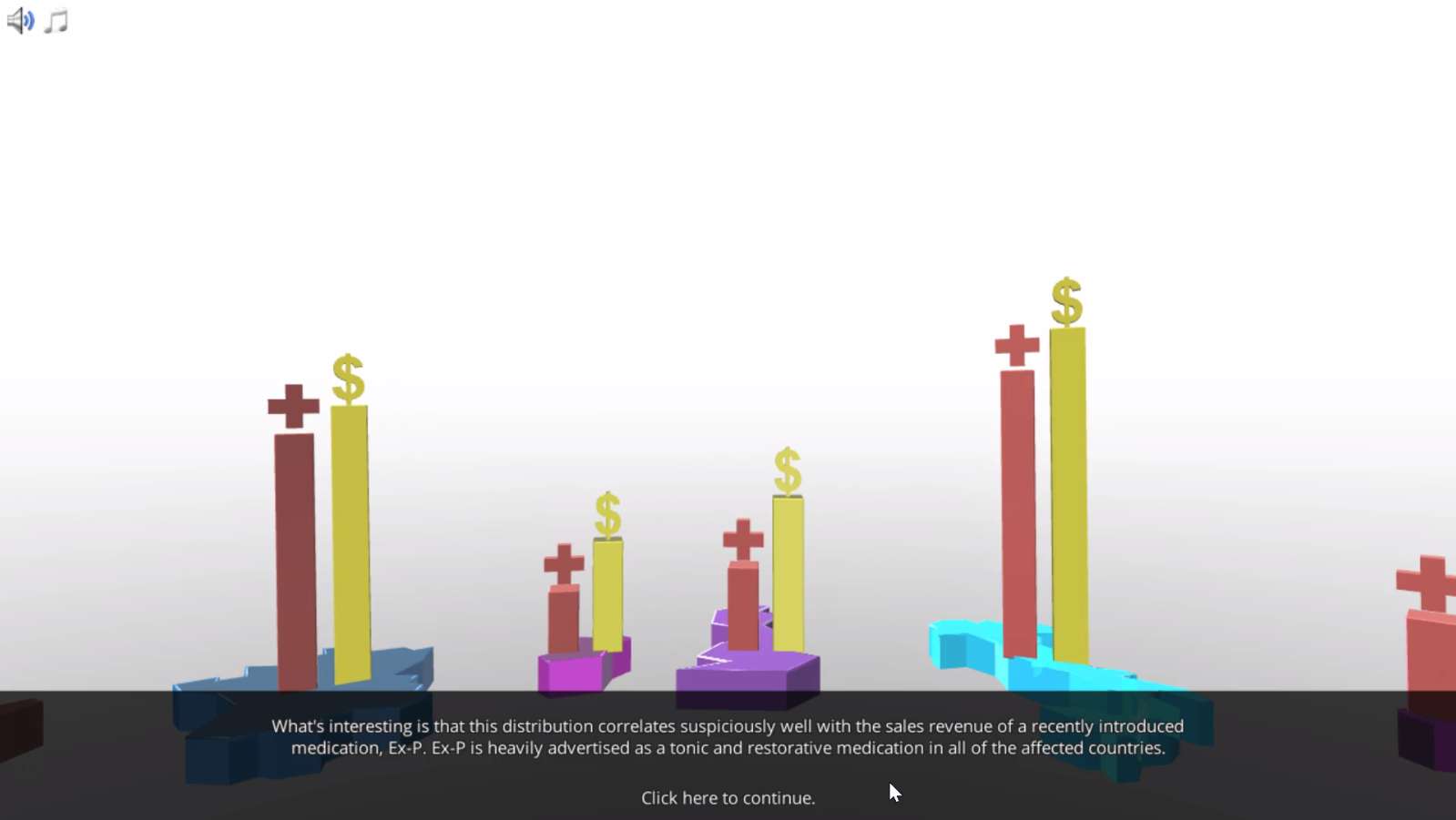Heading 1
Heading 2
Heading 3
Heading 4
Heading 5
Heading 6
Lorem ipsum dolor sit amet, consectetur adipiscing elit, sed do eiusmod tempor incididunt ut labore et dolore magna aliqua. Ut enim ad minim veniam, quis nostrud exercitation ullamco laboris nisi ut aliquip ex ea commodo consequat. Duis aute irure dolor in reprehenderit in voluptate velit esse cillum dolore eu fugiat nulla pariatur.
Block quote
Ordered list
- Item 1
- Item 2
- Item 3
Unordered list
- Item A
- Item B
- Item C
Bold text
Emphasis
Superscript
Subscript
About This Simulation
Work as a pharmaceutical detective to identify the link between a new drug and a recent epidemic. Use the scientific method to design an experiment and perform a fluorescent cell assay to test your hypothesis.
Learning Objectives
- Explain and apply the scientific method
- Design an experiment and test a hypothesis
- Correctly use experimental controls
About This Simulation
Lab Techniques
- Apoptosis assay
Related Standards
- No direct alignment
- No direct alignment
- No direct alignment
Learn More About This Simulation
About the Experimental Design Virtual Lab Simulation
In this simulation, you will learn how to design a scientific experiment. As a pharmaceutical detective, you have the chance to perform experiments with human volunteers, animals, and living human cells. Make sure that you choose the correct experimental model to design a scientifically sound experiment for testing the effect of the suspicious drug.
The scientific method
Humans have always strived to explain natural phenomena. In the first mission of the experimental design simulation, you will learn how to use the scientific method to investigate phenomena, acquire new knowledge, or correct and integrate existing knowledge. Every tool you need to use is available in this virtual lab.
Design an experiment and test your hypothesis
In your next mission you have the freedom to design your own experiment from scratch while examining biopsies under a microscope. Define your scientific question and choose the right model to test your hypothesis. And don’t be afraid to make mistakes – in this virtual simulation you can repeat the experiment as many times as you want.
Experimental controls
You will notice that there are many experimental variables in your experiment. Learn how to adjust them and understand why it’s so important to use experimental controls to verify your results. These controls will let you conclude whether a suspicious compound is the reason behind the reported epidemic. You’ll get to investigate the effect of different compounds and various concentrations of the same compound.
Will you be able to set up an experiment that can prove your suspicions?
Boost STEM Pass Rates
Boost Learning with Fun
75% of students show high engagement and improved grades with Labster
Discover Simulations That Match Your Syllabus
Easily bolster your learning objectives with relevant, interactive content
Place Students in the Shoes of Real Scientists
Practice a lab procedure or visualize theory through narrative-driven scenarios


For Science Programs Providing a Learning Advantage
FAQs
Find answers to frequently asked questions.
Heading 1
Heading 2
Heading 3
Heading 4
Heading 5
Heading 6
Lorem ipsum dolor sit amet, consectetur adipiscing elit, sed do eiusmod tempor incididunt ut labore et dolore magna aliqua. Ut enim ad minim veniam, quis nostrud exercitation ullamco laboris nisi ut aliquip ex ea commodo consequat. Duis aute irure dolor in reprehenderit in voluptate velit esse cillum dolore eu fugiat nulla pariatur.
Block quote
Ordered list
- Item 1
- Item 2
- Item 3
Unordered list
- Item A
- Item B
- Item C
Bold text
Emphasis
Superscript
Subscript
Labster can be integrated within a school's LMS (Learning Management System), and students can access it like any other assignment in their LMS. If your Institution does not choose an LMS integration, students will log in to Labster's Course Manager once they have an account created. Your institution will decide the access method during the sales process.
Labster is available for purchase by instructors, faculty, and administrators at education institutions. Purchasing our starter package, Labster Explorer, can be done using a credit card if you are located in the USA, Canada, or Mexico. If you are outside of North America or are choosing a higher plan, please speak with a Labster sales representative. Compare plans.
Labster simulations are created by real scientists and designed with unparalleled interactivity. Unlike point and click competitors, Labster simulations immerse students and encourage mastery through active learning.
Labster supports a wide range of courses at the high school and university level across fields in biology, chemistry and physics. Some simulations mimic lab procedures with high fidelity to train foundational skills, while others are meant to bring theory to life through interactive scenarios.


















